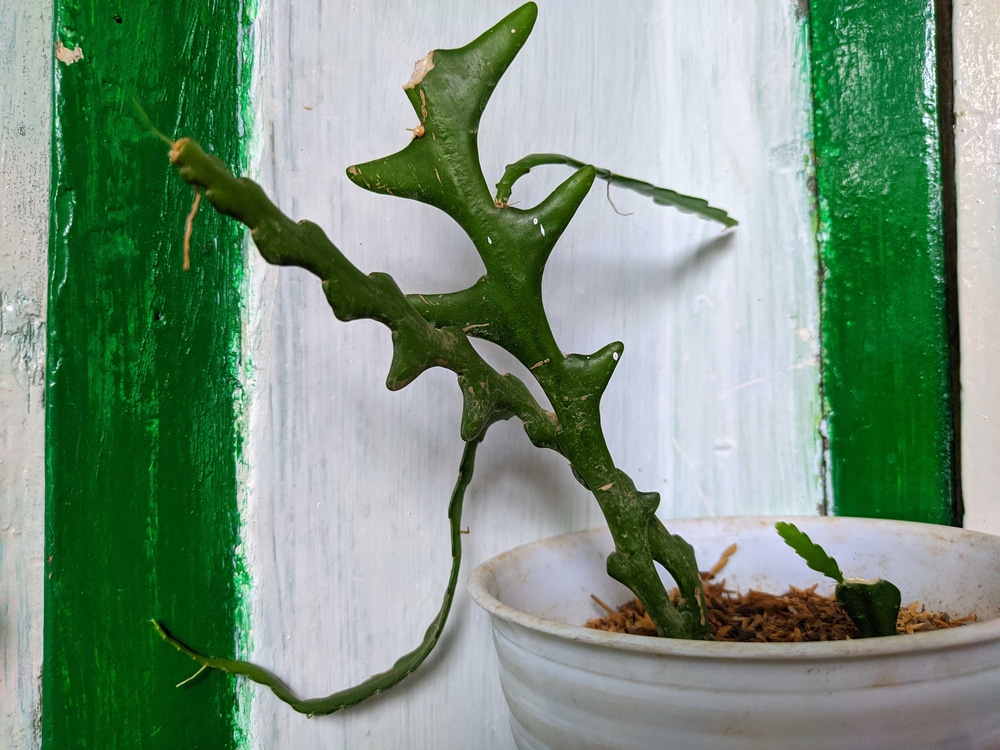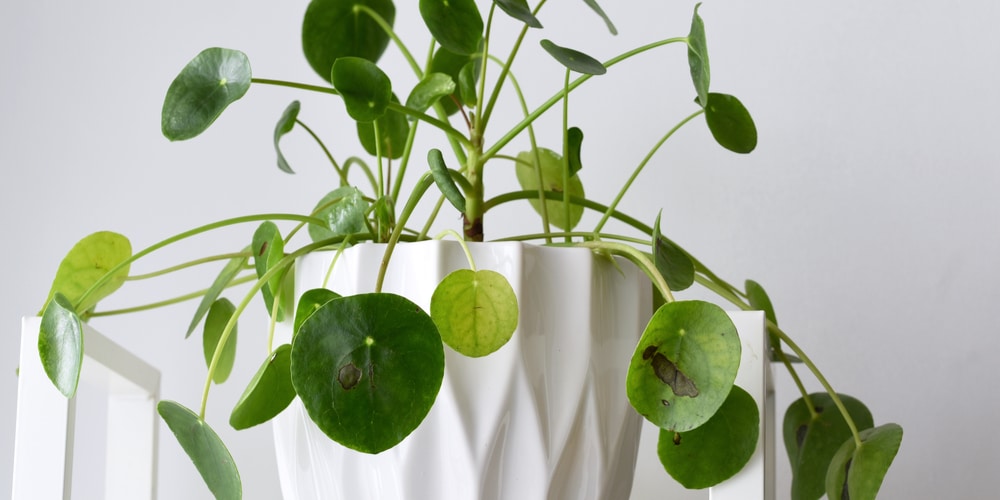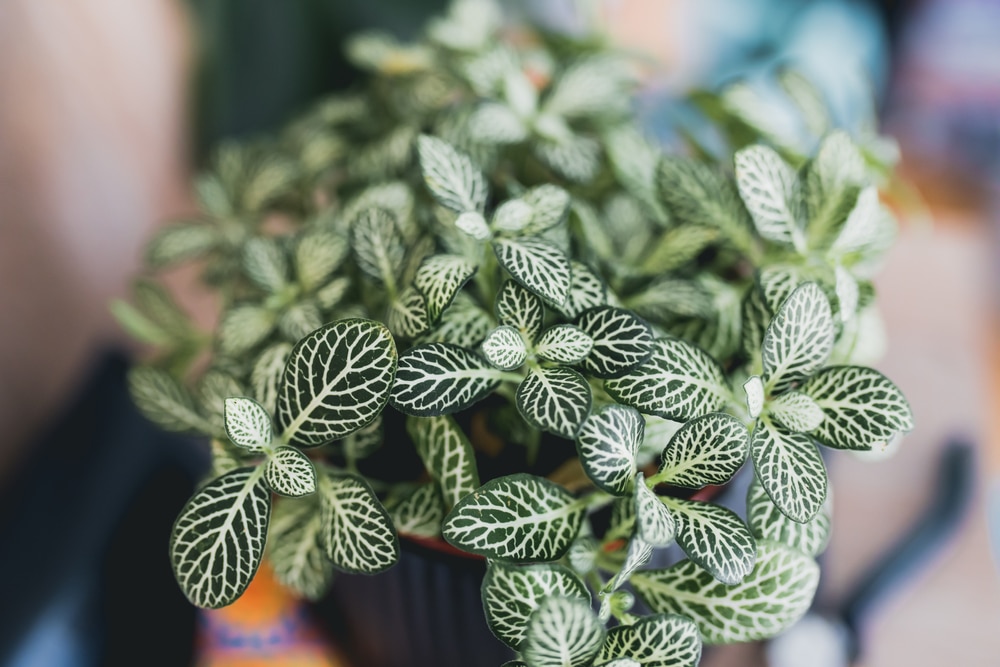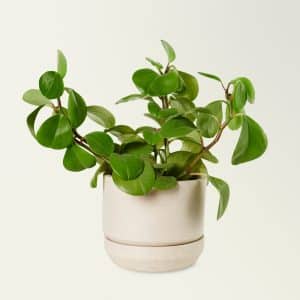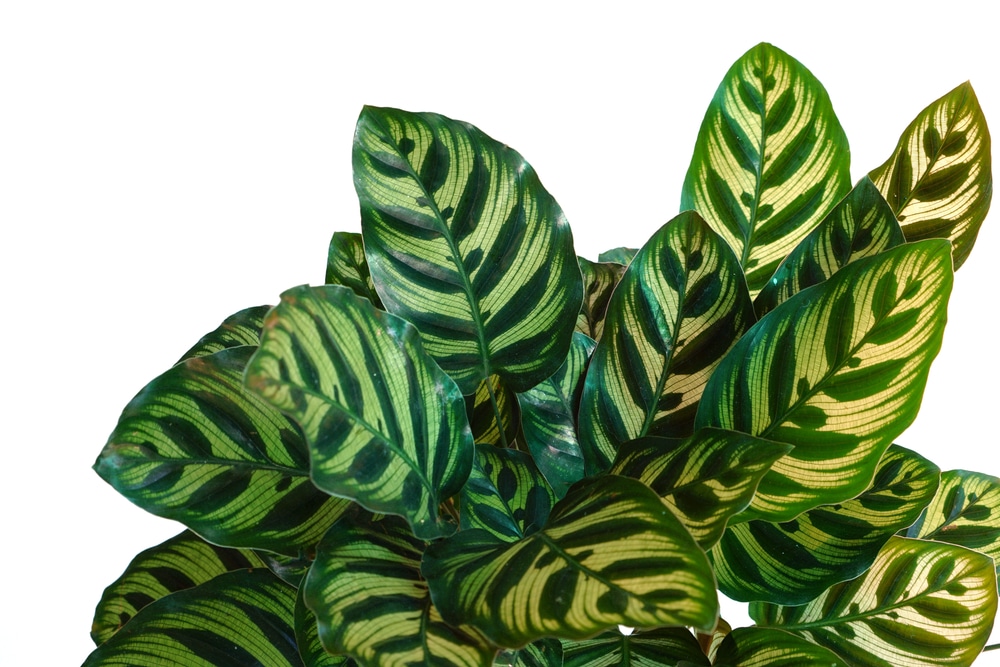Bookshelves can be a little less than ideal as houseplant homes. Most succulents, for example, may be easy to care for and grow very slowly, but they may struggle with lower light conditions up on a bookshelf. These bookshelf plants stand out for staying relatively miniature but not being too picky about getting too much light. They could be the perfect companion for your books.
Small Bookshelf Plants for the True Beginner
A tiny houseplant for a shelf is a great way to start growing plants indoors. These plants are extra easy to care for, just in case you forget to water them when they’re up on a bookshelf.
Fishbone Cactus (Disocactus anguliger)
The fishbone cactus goes by several other names: ricrac cactus or orchid cactus, to name a few. Whatever you call it, it’s instantly recognizable for its strikingly odd foliage. Its stems have flat, wavy zig-zags to them reminiscent of ricrac.
But the fishbone cactus doesn’t just have good looks to brag about. Unlike most cacti, it prefers indirect sunlight. It also fits perfectly on a shelf, as it gets roughly six inches tall when mature.
You might be surprised to hear that this oddball cactus needs water regularly and can be sensitive to tap water. It likes humidity, too, though it’s not as finicky about it as some tropical plants.
Chinese Money Plant (Pilea Peperomioides)
The Chinese money plant has a unique appearance, with leaves shaped like round and smooth little bowls or “coins.” You might enjoy it on your bookshelf for that reason alone, but the plant is also very low-maintenance.
The Chinese money plant only asks for water every 1-2 weeks and medium-level indirect light. Unfortunately, it does not offer actual money in return, but its interesting foliage makes up for it.
Silver Satin (Scindapsus pinctus)
Silver satin is remarkably easy to grow. You only need to water it once a week at maximum, and it can handle any light level as long as it’s indirect.
This plant is a trailing vine that can grow up to 10 feet long, perfect for climbing down from a tall bookshelf. The silver splotches on the leaves give it some extra character.
Small Bookshelf Plants for the Confident Beginner
If you’ve grown houseplants before and feel ready to take on slightly higher demands, these bookshelf plants could be worth checking out. They stay small and low-light-tolerant enough to feel at home on your bookshelf but prefer adjustments like higher humidity.
Nerve Plant (Fittonia)
A nerve plant easily fits on a bookshelf as it only grows to about 6 inches tall at maximum. Their gorgeous foliage shows off intricate vein patterns with high contrast against the leaves.
This pretty little plant can be a little sensitive, though. They might require a small terrarium to maintain the humidity they need to thrive. If they dry out, they can “faint,” which isn’t great for the plant’s long-term health, as you might imagine.
Baby Rubber Plants (Peperomia obtusifolia)
If you’re a fan of their larger, technically unrelated cousins, baby rubber plants might be the right fit for your shelf. They only grow up to a foot tall. These tropical plants are pretty year-round with occasional flower blooms.
The toughest part about growing baby rubber plants is that they like humidity. However, you can overcome a dry environment with bowls of water around your plant, a pebble tray, or by misting the leaves with water.
Calathea Peacock Plant (Calathea makoyana)
Calathea peacock plants are perhaps the most “demanding” houseplants on this list, but if you love their foliage, it could very well be worth it.
They don’t need much light but are much pickier about water. You’ll need distilled water (or rainwater), and they enjoy humidity, much like baby rubber plants. But it’s not too difficult to achieve high moisture if you’re willing to mist your peacock plant and use a pebble tray, for instance.
Wrap Up
Whether you’re short on space or your bookshelf has started looking a little bland, a bookshelf plant could bring a splash of color into your life. These suggestions should get you moving in the right direction if you’re in the market for a small, slow-growing, and low-light-tolerant plant.
